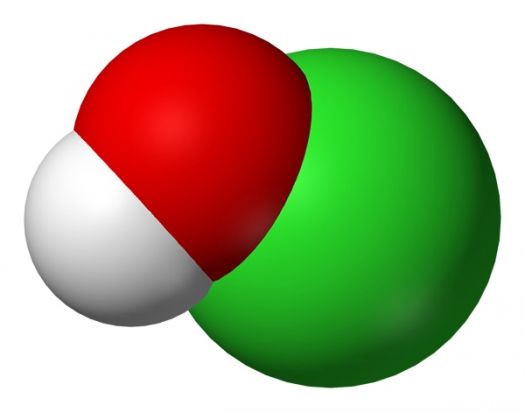Developing an alternative practice for antimicrobial stewardship
Wound and burn care continues to extract an enormous financial toll on health care providers and a burden on patients, especially in terms of infection complications. Traditionally, infection prevention has been addressed through the use of antiseptics, many of which have cytotoxicity issues. Treatment of infection is currently achieved through the use of antibiotics and antimicrobial agents, and other adjunct therapies. However, overuse of antibiotics has led to antibiotic resistance, which is a major concern. Sodium hypochlorite solutions have been used in wound care for a hundred years and are familiar to practitioners as Dakin's solution. In the last 15 years more advanced hypochlorous acid solutions based on electrochemistry have emerged as safe and viable wound-cleansing agents and infection treatment adjunct therapies.
Mode of action
Hypochlorous solution (HOCl) is a strong oxidizer and tends to remove electrons from another substance. Its sodium salt, sodium hydroxide (NaClO), or its calcium salt, calcium hydroxide (Ca(ClO)2), are commonly used in bleach, deodorants and disinfectant products. HOCl exists as a natural endogenous constituent in human and animals and is an important part of the innate immune system. HOCl is produced by neutrophil granulocytes, the most abundant type of white blood cells in mammals. It is involved in the last step of the Oxidative Burst Pathway in fighting infection and foreign substance invasion. When a cell detects invasion of foreign substance it undergoes phagocytosis, during which the neutrophil ingests and internalize microorganisms or foreign particles. This phagocytic event results in the secretion of reactive oxygen species and hydrolytic enzymes. The consumption of oxygen during the generation of reactive oxygen species, termed as the “reactive burst”, involves the activation of the enzyme NADPH oxidase, which produces large quantities of superoxide. This highly reactive oxygen species decays and is broken down to hydrogen peroxide, which is then converted to HOCl. HOCl exerts bactericidal properties and immediately destroys bacteria engulfed by the neutrophil. Despite the substantial activity of HOCl against microorganisms, it is not cytotoxic to human or animal cells. This is probably related to its endogenous presence in the immune system of mammalian cells.
Bactericidal action
The acute inflammatory response to injury or pathogens, typically lasting 1-2 days but as long as 2 weeks,1 is characterized by an influx of immune cells that destroy and remove bacteria, cellular debris, and necrotic tissue.2 Innate immune cells can sense pathogens both chemotactically and by direct physical contact, ultimately resulting in phagocytosis, although recent evidence suggests this is a combinatorial process by which neutrophils recognize the pathogen.3 Once phagocytosis is accomplished, the nicotinamide adenine dinucleotide phosphate (NADPH) oxidase complex located in the cell membrane is activated, generating superoxide (O2-), which can be converted to hydrogen peroxide (H2O2) via the action of superoxide dismutase (SOD). Using physiological concentrations of chloride and hydrogen peroxide, myeloperoxidase – a heme protein principally secreted by neutrophils but also by monocytes and some populations of macrophages – then produces hypochlorous acid (HOCl) in a reaction often termed the oxidative or respiratory burst of activated neutrophils: H2O2 + Cl- + H+ → HOCl + H2O.
Free available chlorine and pptimal pH range
Chlorine has a long history of being used as a disinfecting agent due to its oxidizing ability. It is commonly used to kill bacteria in swimming pools, spas and drinking water. In solution, chlorine dissociates into several chemical compound, including HOCl and hypochlorite (OCl-) ions. Both of these substances attack microorganisms by destroying their membrane bound proteins. The OCl- ion carries a negative charge and is repelled against the negatively charged bacterial surface. The HOCl molecule lacks an electrical charge and thus can more readily penetrate the bacterial cell wall. Chlorine exists as free available chlorine and combined chlorine in solution. Free available chlorine attacks the lipid layers in the bacterial cell wall and renders microorganisms harmless. When bound to microorganisms, chlorine reacts with ammonia, nitrogenous or hydrogen components of the protein structure of these organisms and becomes combined chlorines, such as chloramines. These combined chlorines (chloramines) have very little sanitizing or oxidizing ability. The free available chlorine (FAC) is an indicator of the HOCl concentration in solution, which indicates the oxidizing power of the solution. The balance between HOCl and OCl- ion concentration in solution is driven by the pH.
The maximum HOCl concentration is found when the solution is at pH 5 at 0°C. This is unrealistic to produce a sustainable HOCl solution at such conditions due to FAC and pH and the extremely low temperature. Additionally, the pH of a topical composition should preferably stay in a neutral range to be compatible with human and animal skin tissues and to create an optimal wound care environment.
Cleansing, irrigating and debridement
Several different debridement techniques are available, including surgical, sharp, autolytic, enzymatic, larval, and mechanical. Sharp debridement is generally preferred for most chronic wounds because it is fast and helps convert a chronic wound to an acute wound, removing devitalized tissue and senescent cells. Although considered conservative under some circumstances, sharp debridement requires considerable expertise on the part of the practitioner, and the skill set needed includes knowledge of anatomy, identification of viable or nonviable tissue, and the ability and resources to manage complications, such as bleeding, as well as patient consent before starting the procedure.4 Surgical debridement is usually performed when there are large areas to be debrided and significant infection risk, and often takes place in the OR with or without general anesthesia.
Cleansing is basically removal of loose debris and wound surface pathogens but wound cleansing is not debridement. This is an important distinction. Moreover, all wounds do not need to be cleansed – especially clean, granulating wounds.5 Thus, the usual care flow would be to cleanse the wound if needed with HOCl then debride if needed.
According to clinical practice guidelines, the approach to burn wounds vis-à-vis debridement and cleansing is similar to chronic wounds but also depends on the degree of the burn and whether blisters should be deroofed, which is also a function of area.6
Infection management in acute and chronic wounds has been complicated for decades by appropriate sampling techniques, when to sample (ie, under what conditions), when to culture as opposed to determining infection by clinical symptoms, and the fact that culture results will not necessarily be representative of the microbiological organisms causing an infection.7 The standard approach to treating wound infection is antibiotics, orally, or intravenously for more serious infections, but over usage of antibiotics has led to increasing bacterial resistance at a time when few new antibiotics are coming on to the market.8 Although better stewardship can mitigate the problem, in the field of wound care, some researchers have suggested that local targeted therapy with highly concentrated antibiotics is a better approach. This may certainly have some benefits, but it is too soon to know if this approach will be adopted instead of systemic antibiotic administration. Moreover, it is not known if systemic levels of the antibiotic could cause problems later. It has also been argued that if microbiological screening was much faster, broader, and more accurate – for example, developing personalized topical therapeutics based on the results of molecular diagnostics – wounds would heal a lot faster.9 In this context, while the use of HOCl will not obviate the need for antibiotics, it may augment treatment and speed wound healing without itself being the cause per se of further antibiotic resistance, nor introducing undesirable side effects.
References
- McCarty S, Percival SL. Proteases and delayed wound healing. Adv Wound Care (New Rochelle). 2013;2(8):438-447.
- Schultz GS, Davidson JM, Kirsner RS, Bornstein P, Herman IM. Dynamic reciprocity in the wound microenvironment. Wound Repair Regen. 2011;19(2):134-148.
- Heinrich V, Lee CY. Blurred line between chemotactic chase and phagocytic consumption: an immunophysical single-cell perspective. J Cell Sci. 2011;124((Pt 18)):3041-3051.
- Wilcox JR, Carter MJ, Covington S. Frequency of debridements and time to heal: a retrospective cohort study of 312,744 wounds. JAMA Dermatol. 2013;149(9):1050-1058.
- Dowsett C, Newton H. Wound bed preparation: TIME in practice. Wounds UK. 2005;1(3):58-70.
- Atiyeh B, Barret JP, Dahai H, et al. International Best Practice Guidelines: Effective Skin and Wound Management of Noncomplex Burns. London: Wounds International, 2014.
- Bowler PG, Duerden BI, Armstrong DG. Wound microbiology and associated approaches to wound management. Clin Microbiol Rev. 2001;14(2):244-269.
- Spellberg B. Comment on “Decreased antibiotic utilization after implementation of a guideline for inpatient cellulitis and cutaneous abscess.” Arch Intern Med. 2011;171(12):1080-1081.
- Dowd SE, Wolcott RD, Kennedy J, Jones C, Cox SB. Molecular diagnostics and personalised medicine in wound care: assessment of outcomes. J Wound Care. 2011;20(5):232, 234-9.



